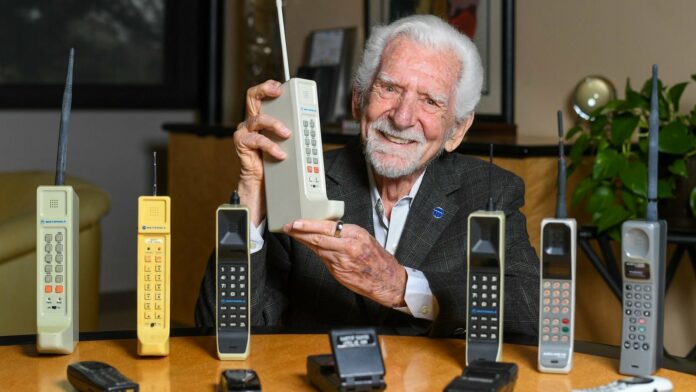
Engineer and inventor Marty Cooper rang-in the mobile handset industry 50 years ago Monday (3 April) when he made the first call on a New York City street using a phone that weighed just under a kilogram and had a battery life of 25 minutes.
During a video interview with Mobile World Live (MWL) at MWC23 earlier this year, Cooper joked the battery life of the handset didn’t matter at the time because it was too heavy to hold up for very long.
For his pioneering work, Cooper, who is known as the Father of the Cell Phone, was honoured at the world’s biggest mobile tech show as the first recipient of the GSMA’s GLOMO Lifetime Achievement Award.
Cooper and his team at Motorola developed the brick-shaped DynaTAC 8000X commercial mobile phone ten years after a prototype was used for that first call. At the time, it worked in just two US cities. Those phones sold for $4,000 when they first became available.
“By today’s value, it was well over $10,000 to have a cell phone,” said Cooper during the MWC23 interview. “They were expensive and they didn’t work very well. One thing we absolutely knew is that someday everybody would have a phone.”
From that first mobile call, GSMA Intelligence data shows the mobile industry has grown to 5.4 billion unique mobile subscribers as of end-2022 and is on track to hit 6.3 billion by 2030. There are also more than 8.4 billion SIM connections globally.
“This significant milestone underlines the astonishing societal impact the mobile phone has had in just 50 years,” Ben Wood, Founder, Mobile Phone Museum, told MWL. “It is the most prolific consumer electronics device in history and there are now more mobile phones than people on the planet.”
Legend
He continued: “Martin Cooper is a true legend. At 94 he remains an extraordinary ambassador for the mobile technology he was so pivotal in developing. His passion, enthusiasm and optimism for technology as a force for good is to be admired.”
Recon Analytics analyst Roger Entner described Cooper as a “pioneer.”
“He did the first call and he helped develop the first device. Those are big, big contributions.”










